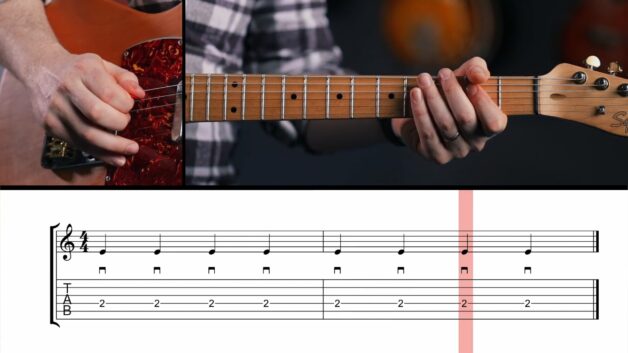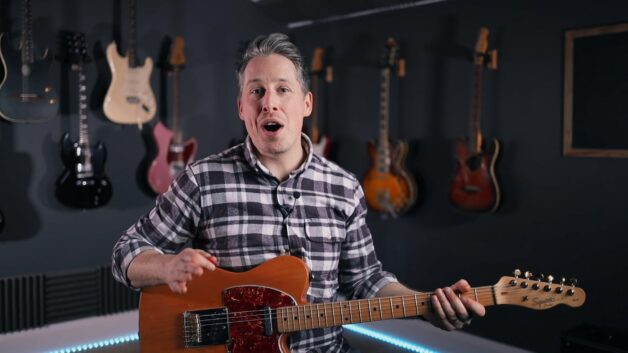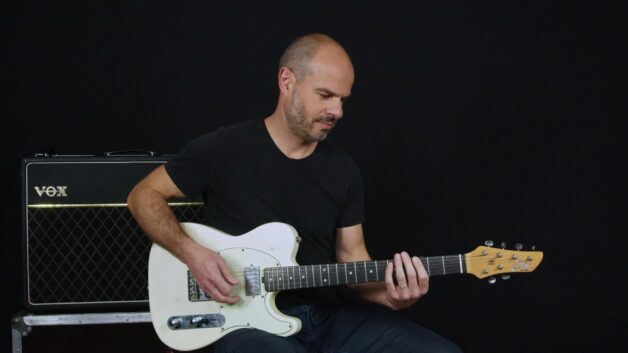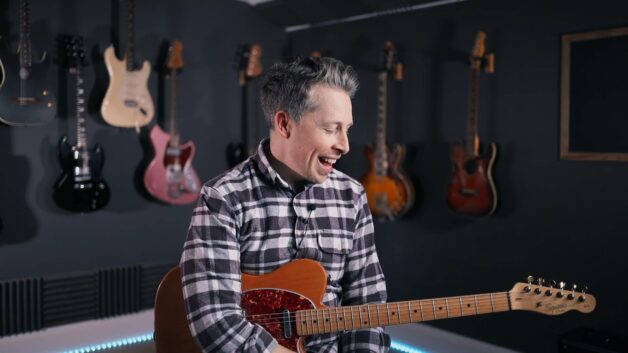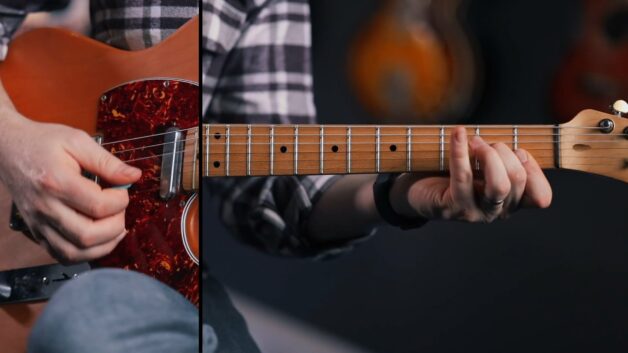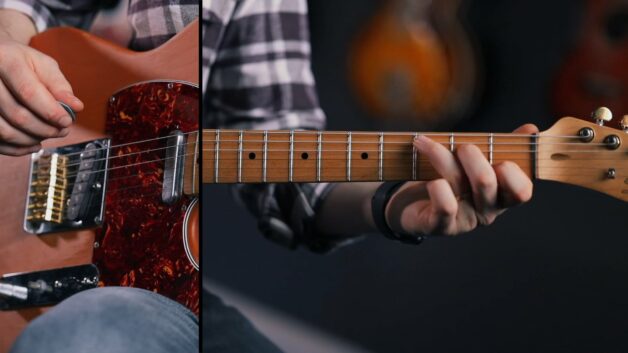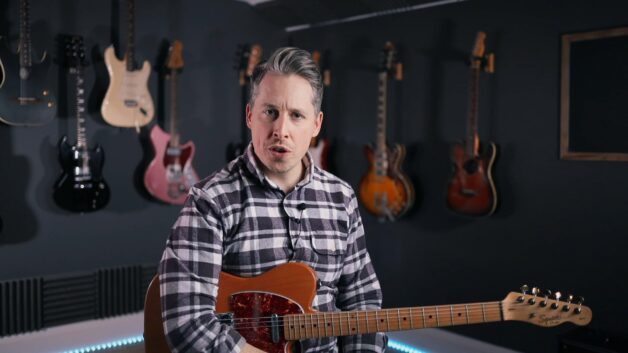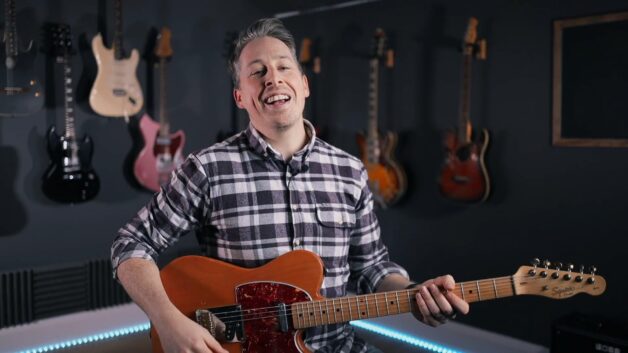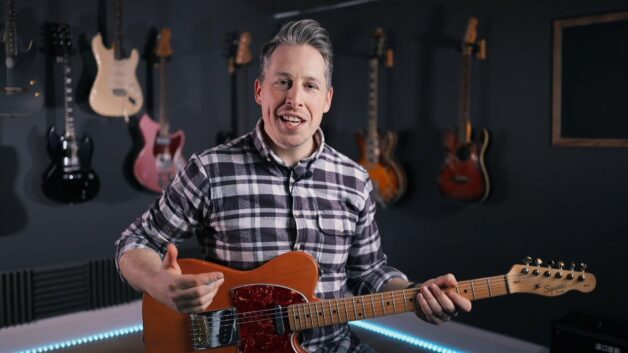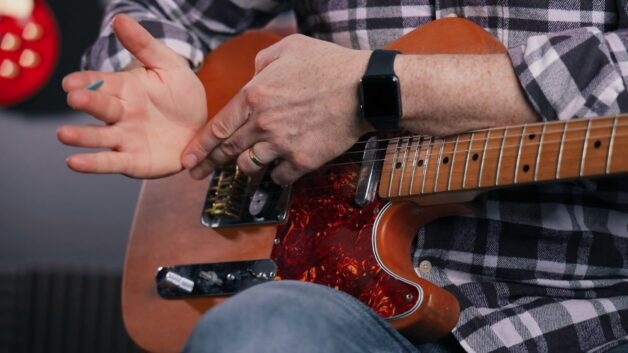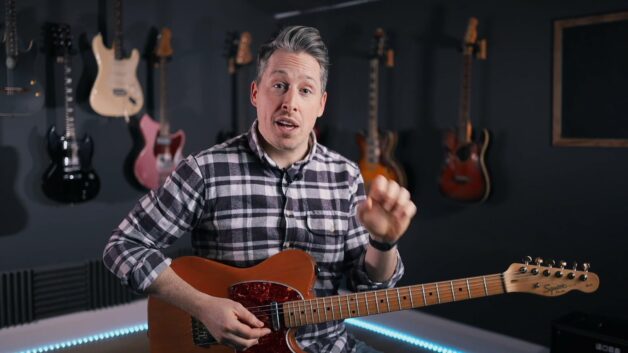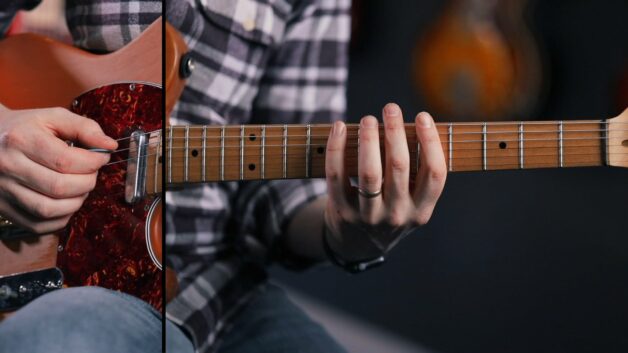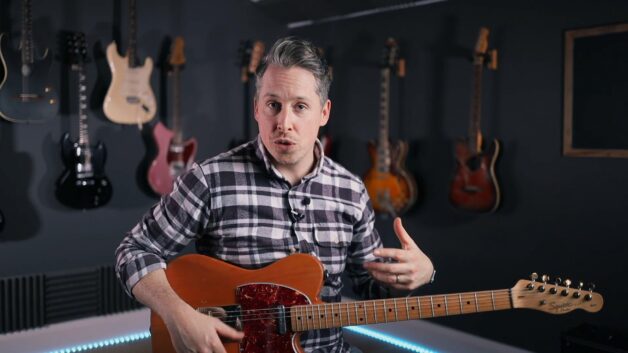Module 2 - Lesson 3
Introduction to Pop Guitar
 Julien Bitoun
Julien Bitoun
- Beginner
- Pop
-
MODULE 2
Introduction to Guitar Music Styles - Introduction to Folk Guitar
- Introduction to Blues Guitar
- Introduction to Pop Guitar
- Introduction to Rock Guitar
- Introduction to Metal Guitar
- Introduction to Funk Guitar
- Introduction to Jazz Guitar
Recommended songs
| Title | Album | Type | |
|---|---|---|---|
Are You Gonna Be My Girl

|
Guitar | ||
Bad

|
The Unforgettable Fire | Guitars, Bass & Backing Track | |
Bohemian Like You

|
Guitar | ||
Boys Don't Cry

|
Acoustic Guitars | ||
Creep

|
Guitar | ||
Don't Look Back In Anger

|
Rhythm Guitar | ||
Drive My Car

|
Rhythm Guitar | ||
Girls And Boys

|
Guitar | ||
Have A Nice Day

|
Acoustic Guitar | ||
Island in the Sun

|
Weezer | Guitar | |
Losing My Religion

|
Acoustic Guitar | ||
Reptilia

|
Electric Guitars | ||
Rich Girls

|
Guitar | ||
Ride

|
Guitar | ||
Song 2

|
Electric Guitars | ||
Steady as She Goes

|
Electric Guitars | ||
Sunday Bloody Sunday

|
Guitar | ||
Supersonic

|
Definitely Maybe | Guitars, Bass & Backing Track | |
Take Me Out

|
Electric Guitars | ||
The End Has No End

|
Electric Guitars | ||
Ticket To Ride

|
Guitar | ||
Vertigo

|
Guitar | ||
Where Is My Mind

|
Electric Guitar | ||
Zombie

|
Rhythm Guitar |
How to Play Pop Music on Guitar: Mastering Rhythm and Tone for Beginners
What Exactly Makes Pop Guitar Sound “Pop”?
Pop music might seem deceptively simple at first, but mastering how to play pop music on guitar requires a subtle understanding of rhythm and tone. Unlike genres where guitar solos dominate, pop guitarists typically play with restraint, enhancing the overall sound without overshadowing the vocals. This means beginners often struggle initially overplaying chords, using excessive distortion, or competing with the singer. These common pitfalls can easily muddy the crisp clarity that characterizes the pop genre.
Interestingly, pop music itself originated as a short, radio-friendly form of music in the 1960s, closely linked to “pop art,” highlighting accessibility over complexity. Legendary bands like The Beatles and The Beach Boys defined early pop, setting benchmarks in melody and harmony rather than flashy technical skill.
Essential Guitar Gear: Getting That Authentic Pop Sound
When learning how to play pop music on guitar, choosing the right equipment genuinely matters. While some guitarists insist that “tone is in the fingers,” beginners will quickly discover how much easier it is to achieve an authentic pop sound with gear adapted to the style.
One classic guitar for pop is undoubtedly the Fender Stratocaster. With its versatile pickup combinations (particularly positions two and four on the selector switch), the Strat provides a clear, bright tone that cuts through busy mixes without overwhelming other instruments. Pairing this guitar with a Vox-style amplifier further enhances your tonal options, providing crisp clean tones as well as slightly crunchy textures ideal for rhythm playing.
Another crucial element of pop guitar tone is effects pedals. The dotted eighth-note delay, famously popularized by The Edge of U2, creates rhythmic layers and a sense of spaciousness around simple guitar riffs. However, beginners must exercise caution: overusing delay effects can quickly lead to confusion in rhythm, turning what was intended as a tasteful embellishment into sonic chaos.
The Rhythm Game: Techniques Every Beginner Should Know
Pop rhythm guitar is fundamentally different from traditional folk or rock strumming patterns. Beginners often mistakenly try to strum all six strings consistently, creating unnecessary sonic clutter. Instead, pop arrangements typically rely on triads (three-note chords) or partial chord voicings. This approach allows the guitar to occupy just enough harmonic space to support the song’s melody without becoming intrusive.
Take, for example, Coldplay’s “Clocks” or “Where the Streets Have No Name” by U2. Both songs use rhythmic delays and minimal chord voicings to build their unmistakable textures. A helpful teaching tip here is to encourage students to practice playing fewer strings intentionally, focusing on clarity rather than volume. Additionally, techniques like palm muting become essential tools to create dynamic contrasts and rhythmic precision, especially when paired with delay pedals.
Common mistakes to avoid:
- Using overly complex chord voicings that compete with vocal melodies.
- Strumming too aggressively or too broadly, which drowns out subtle arrangements.
- Over-relying on effects instead of developing rhythmic accuracy first.
Adding Flavor: Small Techniques That Make a Big Difference
Though rhythm remains central to pop guitar playing, adding expressive techniques like slides, hammer-ons, pull-offs, vibrato, and ghost notes can elevate your playing from merely accurate to genuinely compelling. These subtle embellishments, when tastefully applied, create interest and emotion without adding clutter.
A practical tip for beginners is to start by adding one or two embellishments into familiar chord progressions. For instance, practicing sliding between chords, or integrating a simple hammer-on into a progression found in popular tracks like R.E.M.’s “Losing My Religion,” can significantly enhance your musicality without overcomplicating the performance.
Key Takeaways for Beginners:
- Pop guitar prioritizes rhythmic clarity and harmonic simplicity.
- Equip yourself thoughtfully: Stratocaster guitars, Vox-style amps, and delay pedals define the pop sound.
- Focused strumming with triads and partial chord shapes enhances vocal arrangements.
- Use expressive techniques sparingly to enrich your playing.
By balancing rhythm, tone, and subtlety, beginners can confidently approach pop guitar with genuine authenticity.

